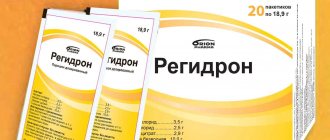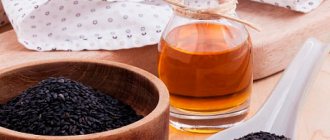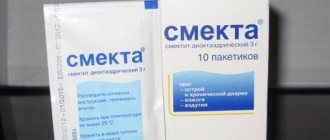Mother's milk is indispensable for a newborn. But there are circumstances in which natural feeding is completely or partially stopped. Pediatricians recommend that young mothers replace breast milk with adapted formulas based on cow's milk. What to do when your baby has individual intolerance? Can goat milk be just as healthy and safe for babies? After all, it is much better absorbed, contains more nutrients and rarely causes allergies.
The benefits and harms of goat milk for a baby
Even the ancients knew about its benefits. Many legends tell of heroes who were fed from infancy with the milk of a goat, which selectively approaches its diet and chooses only useful medicinal herbs. Therefore, goat's milk is tastier and more nutritious than cow's milk. It is easily digestible, does not cause food poisoning, and strengthens the immune system. It contains vitamins and minerals, is hypoallergenic, and rich in easily digestible proteins and carbohydrates. When breastfeeding stops, parents ask the important question of what to base their baby’s diet on. It is advisable to listen to the opinion of doctors, because goat milk, although closer in composition to breast milk, has some differences.
Its advantages include:
- Digestibility. The baby's digestive system is not able to produce enzymes that allow it to actively digest the food it receives. Like breast milk, goat milk in the baby’s stomach can also turn into curd balls, which allows the product to be better absorbed without causing excessive regurgitation and upset.
- Hypoallergenic. Regardless of the age at which it will be introduced into complementary foods, it extremely rarely causes an allergic reaction.
- Rich chemical composition. It contains potassium, vitamins, calcium, which is important for the prevention of rickets.
- Minimum lactose. Children with lactose intolerance can consume goat milk due to its low content, without disturbing the microflora.
- Immune protection. Taurine is a component that helps strengthen the immune system. It is found in breast milk and goat milk, making them similar.
The disadvantages are:
- Presence of casein. This protein is difficult for infants to digest. Turning into a curd clot in the stomach, it causes colic and anxiety.
- Milk contains many minerals. The newborn’s kidneys are not yet able to cope with them.
- Iron and folates. Goat's milk does not include them. Therefore, parents who switch their baby to this type of feeding may experience anemia.
- The baby will not be able to fully digest fatty milk, since the enzyme lipase, which breaks down fatty acids, is completely absent in goat milk.
Any pediatrician will not advise young parents to rely on goat milk for feeding.
New parents are interested in when and from what time to give it, whether it needs to be diluted and why boil it.
What does it contain?
Any fermented milk mixture, in dry or liquid form, must comply with the characteristics established by Tech. Regulation No. 88FZ of June 12, 2008 for milk and dairy products, which specifies the minimum content of beneficial microorganisms during their production:
- acidophilic microorganisms not less than 1*107 CFU/cm3 (g);
- bifidobacteria not less than 1*106 CFU/cm3 (g);
- lactic acid microorganisms 1*107 CFU/cm3 (g).
The mandatory composition of all mixtures to normalize the functioning of the gastrointestinal tract includes:
- Taurine . Until the baby reaches the age of six months, this amino acid is not produced by his body in the required volume. Taurine is responsible for the development of the brain, the formation of the retina, the absorption of fat, and the synthesis of fatty acids.
- Carnitine . The task of carnitine is to protect nerve cells from possible intoxication and to absorb fat into cells.
- Inositol (vitamin B8) . Its maximum amount is found in the tissues of the organs of vision and the brain.
Additionally, the composition may include:
- Palmitic acid . It is contained in palm oil, the presence of which in the mixture is approved by SanPin and standards.
- Starch, maltodestrin . Responsible for the feeling of satiety, regulation of the speed of food movement through the child’s gastrointestinal tract and its rapid digestibility.
- Soy lecithin is an antioxidant and emulsifier. Converts fats into smaller particles, thereby increasing their absorption.
- Nucleotides . They are a component of enzymes, hormones, and DNA.
- Oligosaccharides . Stimulates the growth of beneficial bacteria, prebiotic.
- Choline (vitamin B4) . is a hepatoprotector, necessary for the formation of the nervous system.
Manufacturers do not always write about the vegetable oils and fats contained in their product.
The presence of palm oil in the mixture does not make it of poor quality. There have long been debates about the usefulness or harmfulness of vegetable fats, but their presence in food in acceptable quantities is necessary.
When can you give goat milk to your baby?
For up to 9 months, the baby should be fed with high-quality balanced formulas, and goat milk should be offered in diluted form, in porridge and cottage cheese. Sometimes the first acquaintance should be held after a year, and in some cases after 3 years. The introduction of a dairy product is discussed with your doctor. He will tell you when and how you can introduce milk into your child’s diet.
Usually 50 ml. milk is given at the beginning of the day, and then the reaction is observed for several days. If itching, rash or diarrhea appears, it is recommended to continue administration after a month. If even then there is a similar reaction, then it is necessary to stop using the product for a long time. When the baby has no problems, the norm can be gradually increased. A two-year-old child is allowed to drink up to 700 ml. in a day.
See : what foods can a child eat at 1 year old - sample menu for one-year-old children
How to introduce complementary foods with porridge?
Complementary feeding with porridge should be introduced gradually and alternately: you should not offer your child several different porridges per day or per week.
It is necessary to introduce complementary foods in fractions, starting not with a whole plate or bottle of porridge, but with 1-2 spoons, increasing the volume of porridge offered daily. While giving this small portion, you will need to supplement your baby with breast milk or formula. Gradually, you will replace one daily breastfeeding or formula feeding with a serving of porridge: this replacement period will take approximately 1-2 weeks while the baby gets used to the introduced complementary foods.
When your child gradually adapts to single-ingredient porridge, you can gradually offer him porridges containing two, three or more grains, as well as fruits and vegetables. For children prone to allergic reactions, it is better to give monocomponent, gluten-free and dairy-free cereals.
Is it necessary to breed and how?
Whole milk will have a serious impact on the functioning of the liver and pancreas, so the product must be diluted. Undiluted milk can be given after reaching 3 years of age.
Until this time, it needs to be diluted with boiled water 1:4. This will reduce fat content, the amount of minerals and improve digestibility.
For lactose deficiency, newborns are given a few grams of diluted goat milk 1:10. To do this, fresh milk should be strained through cheesecloth and poured into a bowl, taking into account the addition of water.
Rating of the best options
Let's look at the list, which includes the 10 best fermented milk mixtures for the proper functioning of the gastrointestinal tract in infants:
"NAN 1 (2)"
Includes:
- demineralized whey;
- lactose;
- vegetable oils;
- skimmed milk;
- potato starch;
- maltodextrin;
- culture of bifidobacteria (not less than 106 CFU/g);
- L-carnitine.
Pros : Designed for children of different age groups, also low protein content and reduced osmolarity.
Cons : the manufacturer does not provide all the information about the vegetable oils contained in the composition.
Indicated to normalize intestinal microflora, protect against intestinal infections, improve the absorption of protein, calcium, lactose and iron.
Side effects : may increase regurgitation, the baby may become lethargic and tearful.
"Nutrilak KM"
It includes:
- beneficial bacteria;
- omega-3 and omega-6 fatty cysts;
- nucleotides;
- lutein;
- vitamin complex;
- zinc;
- taurine;
- selenium;
- does not contain sucrose and starch.
Pros : good taste. It does not contain palm or rapeseed oil, but does contain omega-3 and lutein.
The disadvantages are the high protein content in the mixture and increased osmolarity; it does not contain zinc.
There are no age restrictions. Indicated for impaired digestion - intestinal colic, loose stools, constipation, for the prevention of dysbacteriosis, for recovery after taking antibiotics.
If the mixture is not suitable, the baby's stool may be green.
"Nutrilon 1 KM"
It includes:
- skimmed milk;
- leaven;
- maltodextrin;
- a mixture of vegetable oils (sunflower, rapeseed, palm, coconut);
- lactose;
- taurine;
- vitamin and mineral complexes;
- The pH of the mixture is 6.0–6.4.
Pros : helps to better absorb calcium and fats, may be the only nutrition in the baby’s diet.
The disadvantage is the lack of nucleotides, the content of whey protein and casein in equal proportions.
Can be used to feed children from birth. Of all the fermented milk mixtures, this is the most “non-acidic” and most closely resembles mother’s milk. If the mixture is not suitable, the baby's stool may be green.
"Agusha"
Contains:
- whole milk;
- bifidobacteria;
- fructose;
- lactose;
- mixture of vegetable oils;
- maltodextrin;
- cream;
- minerals;
- vitamins;
- nucleotides.
Pros : affordable price.
The disadvantage is that the composition of the mixture is too unnatural, since it contains a lot of vegetable oils and additives that are of no use to a child at such a tender age.
Indicated for the growth of healthy intestinal microflora and weight gain in infants.
Side effects : rash, allergic reactions.
Similac
Compound:
- live bacteria;
- iron;
- fatty acid;
- vitamins;
- minerals;
- lysozyme;
- taurine;
- lactulose.
Pros : very close to mother's milk.
Cons : the mixture can only be purchased in specialized baby food stores and pharmacies.
Similak formula is indicated for feeding children aged 0 to 12 months, including low birth weight and premature babies.
A side effect may be a feeling of hunger in the child, since the mixture does not contain vegetable oils.
Hipp
It includes:
- skimmed milk;
- whey powder;
- lactose;
- Omega 3 and 6 fatty acids;
- vegetable oils;
- nucleotides;
- soy lecithin;
- complex of minerals and vitamins.
Pros : improves intestinal function, helps get rid of allergic reactions.
Cons : May not be suitable for children as it contains cornstarch.
The mixture is indicated for the normalization of stool and the growth of healthy microflora in the child’s intestines.
If this mixture is not suitable for the baby, an allergic reaction and constipation may occur.
Baby
Contains:
- skimmed milk;
- whey concentrate;
- mixture of vegetable oils;
- lactose;
- soy lecithin;
- fish fat;
- choline;
- mineral complex;
- vitamins.
Pros : affordable price and good quality.
Cons : contains a lot of vegetable oils.
The baby mixture is indicated for constipation, strengthens the body’s immune forces, and prevents rickets.
If intolerant, the baby may have frequent bowel movements.
Nestogen
Compound:
- lactic acid bacteria;
- carbohydrates;
- proteins;
- fatty acid;
- lactose;
- vitamins;
- calcium;
- zinc;
- iron.
Pros : baby sleeps soundly, good formula with high quality.
Cons : suitable only for children without obvious health problems.
Nestogen formula is indicated for feeding babies with anemia. A side effect may be loose stools.
Humana
Compound:
- skim cow's milk;
- demineralized whey;
- vitamin complex;
- lactose;
- taurine;
- calcium orthophosphate;
- zinc oxide.
Pros : Free from gluten and crystalline sugar.
Cons : high cost of the mixture.
The mixture is indicated for mixed and artificial nutrition of healthy children, as well as children with intestinal dysfunctions. A side effect may be restless behavior of the baby.
Bellakt
Compound:
- skimmed cow's milk;
- whey demineralized;
- milk sugar;
- whey protein concentrate;
- vegetable oils;
- minerals (calcium, magnesium, copper, zinc, iron);
- vitamins;
- L-carnitine;
- bacterial concentrate of bifidobacteria Bifidobacterium lactis BB-12;
- concentrate of thermophilic microorganisms.
Pros : has a rich composition, vitamin and mineral complex.
Cons : not always available in stores, difficult to find.
The mixture is indicated for mixed and artificial nutrition of healthy children, as well as children with intestinal dysfunctions.
A side effect may be an allergic reaction to the components.
In what form should goat milk be given to infants?
It is advisable to purchase milk from friends who take good care of the animal. If you have to take a product from the market, don’t be shy and ask for a certificate from a veterinarian. An animal whose milk can be safely given to a baby must be healthy. If the milk is from a store, you need to make sure it is fresh and has an expiration date.
Before use, it must be boiled in order to get rid of possible parasites. Use an enamel container for boiling. It is not advisable to boil milk in a metal container. The foam resulting from boiling should be collected, and the milk should be filtered through clean gauze and diluted in the required proportion. It is advisable to boil in small portions and store in the refrigerator in glass or ceramic containers. If your baby consumes a boiled, properly diluted product, he will not have any digestive problems.
Important! The benefit of goat milk lies in its naturalness. When boiled, it loses all its beneficial properties and is equated to cow's milk. Not everyone can afford fresh homemade milk from a pure goat, and it is dangerous not to heat-treat a product purchased on the market and offer it raw to a child.
Dilute the mixtures
Formulas based on goat milk, enriched with folates, can be consumed by children suffering from allergies and intolerance to cow protein. It is also indicated for children with atopic dermatitis, diathesis, and lactose deficiency. They are sold in pharmacies after undergoing preliminary sterilization. According to the instructions for newborns, the mixture is diluted in tablespoons. powder per 10 tbsp. water. At three months of age, the norm is doubled.
For bottle-fed children, such formulas are suitable if they are allergic to cow protein. The baby will no longer be bothered by rashes and colic, and digestion will improve. But you cannot immediately transfer the child to another formula. Goat's milk can also cause unpredictable reactions and allergies; if this happens, it should be excluded from the diet. When natural feeding is insufficient and supplementary feeding is required, boiled diluted goat's milk is given to the baby no more than a teaspoon per day .
Cooking cottage cheese based on goat milk
Cottage cheese is a source of milk proteins, phosphorus and calcium, necessary for the normal growth and development of a little person. By including it in the baby’s diet, the mother will ensure the strengthening of bone tissue and enrich the developing body with valuable microelements and beneficial substances. Due to the fact that goat milk is very healthy and nutritious, and it must be given to babies carefully, it can make excellent cottage cheese, rich in vitamins and minerals. Due to the presence of albumin in goat's milk, products made from it are easier to digest than those based on cow's milk.
Pediatricians recommend including it in the child’s menu when teeth appear - a diagram of teething in children.
Goat curd will be much healthier and safer if you prepare it yourself:
- The milk is placed in a warm place for two days.
- As soon as it turns sour, pour it into a saucepan and place on low heat (the main thing is that it does not boil).
- When the mixture warms up and begins to curdle, remove it from the heat.
- The substance does not need to be constantly stirred, otherwise the curd will disintegrate into small particles.
- The resulting mass should be placed on cheesecloth and squeezed out.
Useful to read : When and how to give cottage cheese to children
How to properly introduce the product into complementary foods
Cow or goat curd is introduced into complementary foods from 7-8 months after the baby is introduced to cereals, vegetables and fruits. Give it in small portions. If a child is allergic to food, cottage cheese complementary foods should be introduced closer to one year. When a newborn lags behind in weight gain or suffers from rickets, the introduction of complementary foods is allowed from 4 months under the watchful supervision of the mother and doctor.
In general, dairy products, including diluted goat's milk, can be safely introduced when:
- the baby sits on his own without needing support;
- he has an interest in other foods;
- weight has doubled since birth;
- he was not vaccinated a week before the introduction of the new product;
- he is absolutely healthy.
Differences between cow's milk and breast milk
The composition and quality of cow's milk are not similar to mother's milk due to the lack of immunological factors that are present in mother's milk. When the content of minerals and protein is increased, and the amount of carbohydrates, vitamins and fatty acids is reduced, this leads to serious disorders in the child’s body. Cow's milk should not be given early due to possible allergies in the infant. The product is a valuable source of nutrients for a growing child, but it is not advisable to introduce it into the diet during the first year of life.
A comparative table will help you understand the similarities and differences in the composition of cow's and breast milk:
| Factors | Cow | Chest |
| immunological | No | There is |
| protein | 5% | 1% |
| taurine, cystine | deficit for brain development | 34 times more |
| carnitine | residual content | 40 times more |
| orotic acid | No | There is |
| fats | 4% | 4% |
| fatty acid | excess | norm |
| linoleic acid | deficit for brain development | norm |
| lipase | No | There is |
| lactose | 3% | 7% |
| sodium | 30 | 6,5 |
| potassium | 49 | 14 |
| chlorides | 41 | 12 |
| calcium | 1750 | 350 |
| phosphates | 1050 | 150 |
| iron | not digestible | completely absorbed |
| vitamins | not enough | norm |
| water | must be given additionally | you can only get by with mother's milk |
What types of fermented milk mixtures are there?
According to the form of release, they are distinguished:
- dry: they are produced in the form of a powder, diluted in a certain proportion with drinking water (NAN 1 “Sour-milk”, Nutrilon 1 “Sour-milk”, “Malyutka 1 “Sour-milk”, etc.);
- liquid formulas: ready-to-eat baby food products (“Agusha 1 Fermented Milk”).
All therapeutic foods are marked according to age:
- “0” – for premature babies;
- “1” – for children in the first six months of life (including newborns);
- “2” – from 6 to 12 months;
- “3” – from 12 to 18 months;
- “4” – for children over 1.5 years old.
Which one to choose: store-bought or homemade?
Every mother faces this choice, and opinions are divided. Some argue that for children of this age it is better to give only homemade kefir, others insist that it is safer to buy a ready-made product. However, the choice is only up to the parents, because even certified doctors recommend differently. Some are for dairy cuisine or a store-bought drink, others assure mothers to make kefir on their own, if not from homemade milk, then from store-bought milk, but at home using a starter.
Cook at home or use products from the dairy kitchen: the opinion of a pediatrician
Making your own kefir
If parents prefer making a drink at home, doctors immediately pay attention: you should not give infants just sour milk, the baby’s stomach is simply not able to digest such a drink, because the enzyme system is not yet fully mature for adult food. The best option for making kefir at home is to use milk and a special starter culture, which contains a certain composition of bacteria and fungi. Doctors recommend choosing milk carefully: you should not buy a product on the market without the necessary documents confirming that the milk does not contain pathogenic bacteria or infections. Experts recommend giving preference to store-bought milk, which has a shelf life of no more than 10 days and a fat content of no more than 3.2%.
For homemade kefir, it is better to use pasteurized milk and starter culture.
Having chosen milk, you need to take care of the starter. It is best to buy it at a pharmacy: all necessary storage conditions are met there, because... bacteria die at the wrong temperature. Sourdough starters are sold in bags or ampoules. You can also use a small amount of earlier prepared kefir or sour cream as a starter. Preparing fermented milk product is not difficult at all:
- Take 1 liter skim or pasteurized milk.
- Sourdough: one sachet of store-bought or 4 tablespoons of sour cream or good quality kefir.
- Bring the milk to a boil and leave to cool at room temperature. Please note that you should not try to speed up the cooling process of milk by taking it out into the cold air or putting it in the refrigerator. One of the conditions for successful preparation of kefir is that the milk must cool gradually at room temperature.
- As soon as the milk becomes warm, approximately 25 degrees, you can add starter to it. If you are using dry bacteria, pour 100 ml of milk into a separate container and add the starter there. Mix thoroughly until smooth so that the starter does not form lumps. Then pour this mixture into a container with milk and stir. Kefir or sour cream can be added directly to the container with milk and mixed well.
- Kefir can be fermented in a yogurt maker or in bottles, but always in a warm place. The preparation process in a yogurt maker is simpler and kefir is always obtained: just develop the milk in special jars, put them in the yogurt maker and turn on the device, setting the time to 12 hours. After this, let the kefir cool and the drink is ready. If you do not have such a device, pour the milk into bottles or jars and place in a warm place without drafts or cold air for 12 hours. Then place the product in the refrigerator for another 4 hours. After this, kefir is ready for use.
- Another option is to prepare kefir in a multicooker: the operating principle is the same, only after adding the starter to the milk, it needs to be poured into the multicooker bowl, but do not set the program, but turn on the heating mode, i.e. when the temperature of the milk does not increase, but is maintained at the same level. Only the cooking time is significantly reduced: it is enough for the milk to stand for only 8 hours. Some multicooker models have a “yogurt” program, which is great for making kefir.
The yogurt maker creates the optimal temperature for fermenting kefir
It should be remembered that homemade kefir cannot be stored for longer than three days, unlike store-bought kefir, which has a shelf life of up to 10 days. Therefore, if the baby has not drunk all the kefir within three days, you should not give it to the child anymore. It's better to prepare a new portion.
How to make kefir yourself at home: video
And if store-bought: how to choose a quality product
First of all, parents should know that babies can only be given a special baby product. Regular kefir for adults is not suitable for children at this age: it has a higher fat content and has a longer shelf life than for children. The product, which is made specifically for baby feeding, undergoes strict quality control; only the highest quality products are used for its preparation.
Popular brands of baby kefir in the photo
Children's kefir Izbyonka for babies from 8 months Children's kefir Belakt of Belarusian production Children's kefir Agusha 3.2% fat content
Before buying kefir, pay attention to the following points:
- manufacturer: give preference to well-known brands that pass all stages of quality control and product certification. The inscription on children's kefir is required that it is recommended by the Union of Pediatricians for children in the first year of life;
- product composition: baby kefir should not contain preservatives, dyes, GMOs and other harmful ingredients. The optimal composition consists of milk and starter culture with bacteria and fungi. Kefir can be enriched with vitamins and minerals;
- shelf life: baby kefir should not be stored for more than 10 days;
- storage temperature: when buying kefir, pay attention to exactly where it is in the store or supermarket. The optimal storage temperature is from +2 to +6 degrees. If the packaging of fermented milk products is not on refrigerated shelves, such kefir is not worth buying.
Please note that kefir does not contain any juices or pieces of fruit. In this case, it is no longer kefir, but yogurt. However, you cannot start complementary feeding with yogurt; first the baby must get used to kefir. Parents observe the reaction of the child’s body, and only after successfully feeding the baby with kefir, yogurt can be gradually introduced into the menu.









